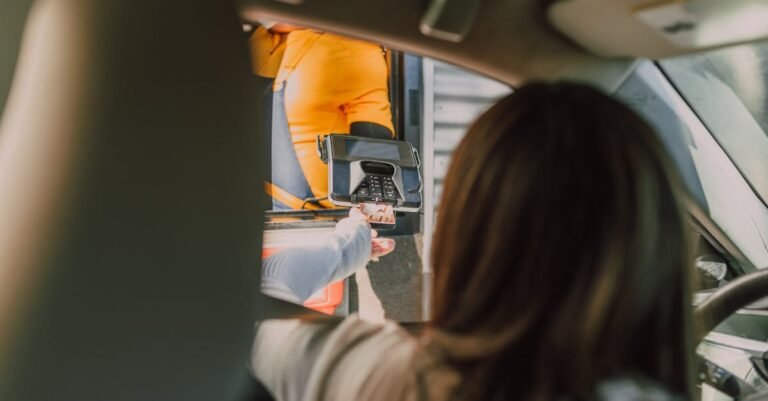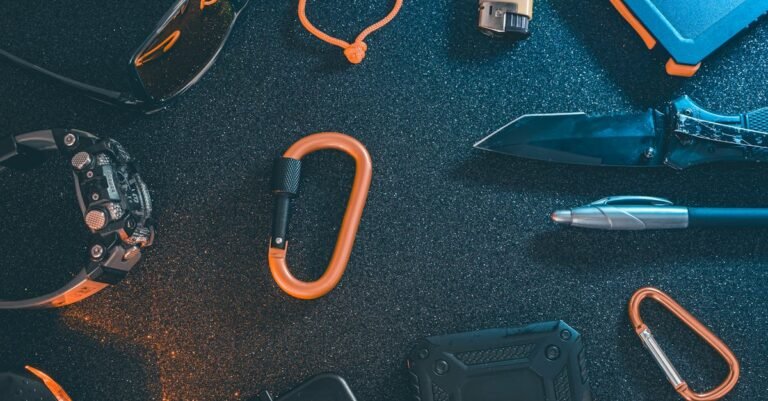- Driving With Pets: Your Ultimate Safety Guide for Road Trips
- Why Bother? The Real Risks of Driving with Loose Pets
- Setting Up for Success: Prepping Your Pet for the Road
- Buckle Up, Buttercup! Choosing the Right Pet Restraint
- On the Road Again: Best Practices During the Drive
- Handling Specific Situations and Pet Needs
- You’ve Arrived! Settling In After the Journey
- Conclusion: Safe Travels Make Happy Tails
- Frequently Asked Questions (FAQs)
Driving With Pets: Your Ultimate Safety Guide for Road Trips
Hitting the open road with your furry, feathered, or scaled companion sounds like the perfect adventure, right? Visions of wind blowing through fur, happy panting, and shared scenic views dance in our heads. But hold on a second! Before you pack the leash and treats, let’s talk safety. Bringing your pet along for the ride requires more than just opening the car door. It’s about ensuring their well being, your focus on driving, and frankly, obeying the law. Think of it like buckling up a child – it’s non negotiable for their safety. This guide is your co pilot, navigating you through everything you need to know for safe and happy travels with your beloved pet.
Why Bother? The Real Risks of Driving with Loose Pets
Okay, let’s be real. It’s tempting to let Fido roam free in the backseat or have Whiskers curl up on the passenger seat. They look so happy, right? But what happens if you need to slam on the brakes? Or worse, get into an accident? An unrestrained pet becomes a projectile, posing a serious danger to themselves and everyone else in the vehicle. It’s not just about preventing minor bumps; it’s about avoiding potential tragedy. Plus, a loose pet is a major distraction. That sudden bark, the attempt to climb into your lap, or even just pacing nervously can take your eyes and mind off the road for critical seconds. It’s simply not worth the risk.
Flying Fur (and Worse): The Dangers of Unrestrained Pets
Imagine this: you’re driving at 30 mph and have to stop suddenly. A 60 pound dog, if unrestrained, can become a projectile with an impact force of roughly 2,700 pounds. Ouch. That’s enough to cause severe injury or death, not just to the pet but also to human passengers. Even a small pet, like a 10 pound cat, can generate significant force. Beyond the horrifying projectile scenario, unrestrained pets can:
- Interfere with Driving: Getting under the pedals, jumping onto the driver’s lap, blocking views.
- Escape After an Accident: A scared, possibly injured pet might bolt from the vehicle into traffic if a door or window breaks open.
- Hinder First Responders: A loose, frightened, or protective pet can prevent emergency personnel from reaching injured humans quickly.
Securing your pet isn’t about being mean; it’s about responsible pet ownership and keeping everyone safe.
Is It Even Legal? Laws Around Pet Transport
While there might not be a universal, federal law mandating pet restraints in cars across the board (like seatbelt laws for humans), don’t assume you’re in the clear. Many states and local jurisdictions do have laws concerning the safe transport of animals. These can range from specific requirements for restraints to broader distracted driving laws that could absolutely apply if your pet is causing a ruckus. Some states explicitly prohibit pets riding in drivers’ laps or driving with a pet in the bed of an open truck unsecured. It’s crucial to check the laws for your state and any states you might be traveling through. A quick online search for “[Your State] pet car restraint laws” is a good starting point. Getting pulled over or, worse, causing an accident due to an unsecured pet can lead to fines and serious legal consequences.
Setting Up for Success: Prepping Your Pet for the Road
You wouldn’t just toss a toddler into a car for a 10 hour drive without some prep, right? Same goes for your pet! A little preparation goes a long way in making the journey smoother and less stressful for everyone involved. This means getting them used to the car itself and making sure you have everything you need before you even turn the key.
Making Friends with the Car: Acclimatization Tips
For many pets, the only car ride they know ends at the vet’s office or the groomer – not exactly favorite destinations! This can create negative associations with the car. The goal is to change that perception and make the car a neutral, or even positive, place. Start slow. Let your pet explore the car while it’s parked. Sit with them inside without going anywhere. Offer treats and praise. Make it a happy, calm experience.
Baby Steps: Short Trips and Happy Associations
Once your pet seems comfortable just being in the car, start the engine for short periods. Then, progress to very short trips – maybe just around the block or to a nearby park they love. The key is to make the destination enjoyable! If every car trip ends somewhere fun (like a walk, playtime, or a favorite spot), they’ll start associating the car with good things. Keep these initial trips brief and gradually increase the duration as your pet gets more comfortable. Always use their chosen restraint system right from the start, so they get used to that too.
The Essential Pre Trip Checklist
Before embarking on any significant car journey with your pet, a bit of planning is essential. Think of it as packing their suitcase and making sure they’re road ready.
Healthy Travels: Vet Visits and Records
Especially for longer trips or travel across state lines, a check up with your vet is a smart move. Ensure your pet is up to date on vaccinations (especially rabies) and flea/tick/heartworm prevention. Discuss any potential travel anxiety or motion sickness; your vet might suggest remedies or medications. Get a copy of their vaccination records and any important medical history to bring along – you never know if you might need to visit an unfamiliar vet while traveling. It’s also wise to get a health certificate if required by your destination or airline (if part of the journey involves flying).
Don’t Forget the Kibble! Packing Essentials
Just like you pack snacks and essentials, your pet needs their gear too. Here’s a basic list:
- Food and Water: Pack enough of their regular food for the entire trip, plus a little extra. Sudden food changes can cause tummy upset. Bring plenty of fresh water and collapsible bowls.
- Medications: Any regular meds, plus any prescribed for travel anxiety or motion sickness.
- Restraint System: Their crate, carrier, harness, or barrier.
- Leash and Collar/Harness with ID Tags: Ensure tags have current contact information. Consider microchipping as a backup.
- Waste Bags and Cleaning Supplies: Accidents happen! Paper towels, pet safe cleaner, and plenty of poop bags are must haves.
- Comfort Items: A favorite blanket, toy, or bed can help them feel more secure.
- First Aid Kit: A pet specific first aid kit is recommended.
- Grooming Supplies: Brush, wipes, etc., depending on your pet’s needs.
- Important Documents: Vaccination records, health certificate, photo of your pet (in case they get lost).
Buckle Up, Buttercup! Choosing the Right Pet Restraint
This is arguably the most crucial safety decision you’ll make. Letting your pet roam free is simply not an option. There are several types of restraints, each with pros and cons. The best choice depends on your pet’s size, temperament, and your vehicle type.
Crates and Carriers: A Cozy Den on Wheels
Often considered the safest option, especially for smaller pets and cats, crates and carriers provide a contained space. In an accident, a sturdy, well secured crate can offer significant protection. Think of it as their personal little safety cell. They also prevent driver distraction and stop pets from escaping if a door is opened.
Finding the Perfect Fit: Sizing and Security
The crate or carrier needs to be the right size – large enough for your pet to stand up, turn around, and lie down comfortably, but not so large that they’ll be thrown around inside during a sudden stop. Ensure it’s well ventilated. Most importantly, the crate itself must be secured in the vehicle, ideally using seatbelts or cargo straps. Placing it on the floor behind the front seats or in the cargo area (for SUVs/hatchbacks) is often recommended. An unsecured crate can become just as dangerous as an unrestrained pet.
Pet Seat Belts and Harnesses: Safe and Secure
For dogs who aren’t crate trained or prefer being out, a crash tested safety harness that integrates with the car’s seatbelt system is a good alternative. These are specifically designed to withstand crash forces and distribute pressure across the dog’s body, minimizing injury. Never attach a seatbelt tether to your dog’s regular collar – this could cause serious neck or spinal injuries in a sudden stop or crash.
Not All Harnesses Are Equal: Look for Crash Testing
This is critical! Many products marketed as “pet seatbelts” offer little more than preventing distraction; they haven’t been rigorously tested for crash safety. Look for harnesses that have been independently crash tested by organizations like the Center for Pet Safety (CPS). A certified harness provides peace of mind that it will actually perform its safety function when needed most. Ensure the harness fits snugly but comfortably and follow the manufacturer’s instructions for securing it to the seatbelt system.
Car Barriers: Keeping Them in Their Zone
Car barriers (metal grids or strong netting) typically fit between the front and back seats or section off the cargo area of an SUV or wagon. While barriers can effectively prevent a pet from distracting the driver or jumping into the front, they offer minimal protection in a crash. A large dog could still become a projectile within the cargo space or potentially break through a less sturdy barrier. Barriers are best used in conjunction with another restraint method (like a harness secured in the back) or primarily for preventing distraction rather than as a primary crash safety device.
On the Road Again: Best Practices During the Drive
You’ve prepped your pet, chosen the right restraint, and packed the essentials. Now it’s time to hit the road! Keeping a few best practices in mind during the actual drive will ensure the journey remains safe and comfortable for your furry co pilot.
The Joyride Myth: Why Heads Inside Are Happier (and Safer!)
We’ve all seen it: the dog with its head out the window, ears flapping, looking like it’s having the time of its life. While it might look fun, it’s incredibly dangerous. Your pet is vulnerable to:
- Eye, Ear, and Nose Injuries: Flying debris (dust, rocks, insects) can cause serious damage.
- Lung Infections: Cold air forced into the lungs can lead to respiratory issues.
- Falling Out: A sudden swerve or bump could potentially eject your pet from the vehicle.
- Accidental Window Closure: Power windows can inadvertently close on a pet’s neck.
Keep windows rolled up high enough that your pet can’t stick their head out. Use the air conditioning to keep them cool instead. Their safety is far more important than that picturesque (but perilous) windblown look.
Stretch Those Paws: The Importance of Regular Breaks
Just like humans, pets need breaks during long drives. Plan to stop every 2 to 3 hours. This gives your pet a chance to relieve themselves (always on leash!), stretch their legs, and have a drink of water. It also breaks up the monotony of the drive for them. Choose safe stopping areas like rest stops or quiet parks, away from heavy traffic. Never let your pet out of the car without their leash and collar/harness securely fastened.
The Hot Car Danger: Never EVER Leave Your Pet Alone
This cannot be stressed enough: NEVER leave your pet unattended in a parked car, not even for “just a minute.” Cars heat up incredibly quickly, even on seemingly mild days or with the windows cracked. On an 85 degree Fahrenheit day, the temperature inside a car can soar to over 100 degrees in just 10 minutes, and over 120 degrees within 30 minutes. This can quickly lead to heatstroke, brain damage, and death. Similarly, cars can become dangerously cold in winter. If you need to run an errand where pets aren’t allowed, either leave them safely at home or have a human companion stay with them outside the vehicle.
Handling Specific Situations and Pet Needs
Not all pets are seasoned travelers, and different species have different requirements. Addressing specific needs can make the journey much smoother.
Calming the Nerves: Tips for Anxious Pets
Some pets experience significant anxiety or motion sickness during car rides. Signs include excessive panting, drooling, whining, restlessness, vomiting, or inappropriate elimination. Besides gradual acclimatization, consider:
- Pheromone Sprays/Diffusers: Products like Adaptil (for dogs) or Feliway (for cats) mimic calming natural pheromones.
- Thundershirts/Anxiety Wraps: These apply gentle, constant pressure, which can have a calming effect.
- Supplements: Certain calming supplements (like those containing L theanine or tryptophan) might help, but discuss with your vet first.
- Medication: For severe cases, your veterinarian can prescribe anti anxiety or anti nausea medication. Always test medications before a long trip.
- White Noise/Calming Music: Soft music or white noise can sometimes help soothe anxious pets.
- Limit Food Before Travel: Feeding a large meal right before driving can worsen motion sickness. Offer a small meal several hours beforehand.
Feline vs. Canine Cruising: Different Needs
While many safety principles apply to both, cats and dogs often react differently to car travel. Most cats prefer the security of a carrier. Ensure it’s comfortable, familiar (perhaps leave it out in the house beforehand), and covered partially with a light blanket to create a sense of security. Unlike dogs, most cats won’t need frequent potty breaks if the trip isn’t excessively long, but have a small, disposable litter box available just in case for very long journeys or overnight stops. Dogs, being generally more adaptable, might do well in either a crate or a harness, depending on their training and temperament. They definitely require more frequent potty and exercise breaks.
You’ve Arrived! Settling In After the Journey
Congratulations, you made it! Once you arrive at your destination, keep your pet leashed or contained until you are safely inside or in a securely fenced area. Explore the new surroundings together on leash first. Set up their food, water, bedding, and litter box (for cats) immediately in a quiet spot to help them feel at home. Try to stick to their regular feeding and walking schedule as much as possible to minimize stress. Give them plenty of attention and reassurance as they adjust to the new environment.
Conclusion: Safe Travels Make Happy Tails
Traveling with your pet can create wonderful memories, but safety must always be the top priority. It’s not just about following rules; it’s about protecting a beloved member of your family. From choosing the right restraint and packing essentials to taking regular breaks and never leaving them alone in the car, these steps ensure that your road trips are enjoyable and safe. Remember, a secured pet is a safe pet, and a safe pet means a less distracted driver. So, buckle up your furry friend, plan ahead, and get ready for many happy adventures together on the open road!
Frequently Asked Questions (FAQs)
1. Is it okay to let my small dog ride on my lap while I drive?
Absolutely not! It’s incredibly dangerous for several reasons. Your pet could be crushed by the airbag in an accident, interfere with your steering or pedals, or become a projectile. It’s also illegal in many places due to distracted driving laws. Always use a proper restraint.
2. My cat hates her carrier. What can I do?
Acclimatization is key! Leave the carrier out in your home with comfy bedding inside, occasionally placing treats or toys in it. Start with very short periods inside with the door open, gradually increasing the time and eventually closing the door briefly. Associate the carrier with positive things, not just vet visits. Pheromone sprays like Feliway can also help reduce anxiety associated with the carrier.
3. Can I use a regular dog harness with a seatbelt attachment?
It’s strongly advised against using a regular walking harness. These are not designed to withstand crash forces and can break or cause serious injury to your pet. Invest in a harness specifically designed for car travel that has been crash tested by an independent organization like the Center for Pet Safety (CPS).
4. How often should I stop for breaks when driving with my dog?
A good rule of thumb is to stop every 2 to 3 hours. This allows your dog time to go potty, stretch their legs, and rehydrate. Senior dogs, puppies, or pets with medical conditions might need more frequent stops. Always keep them on a leash during breaks.
5. What’s the safest place in the car for a pet carrier?
Generally, the safest place is on the floor of the back seat, wedged behind the front seat, or in the cargo area of an SUV/hatchback/wagon, secured so it cannot slide or tumble. Avoid placing small carriers on the seats where they could be crushed by luggage or become airborne. Never place a pet in the front passenger seat due to the risk from airbags.









